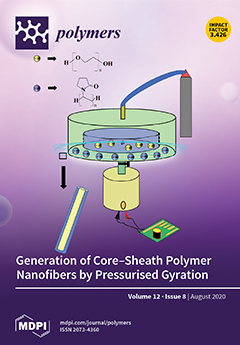The target of this work is to investigate and assess the utilization of the synthesized in-situ deposition of metal oxide nanoparticles such as nano-nickel oxide (nNiO), nanocopper oxides (nCuO) and nanoiron oxides (nFe
3O
4) in aminated cellulose (Acell), as a
[...] Read more.
The target of this work is to investigate and assess the utilization of the synthesized in-situ deposition of metal oxide nanoparticles such as nano-nickel oxide (nNiO), nanocopper oxides (nCuO) and nanoiron oxides (nFe
3O
4) in aminated cellulose (Acell), as a protected and compelling antibacterial channel of contamination from domestic wastewater. The prepared Acell and nNiO/Acell, nCuO/Acell and nFe
3O
4/Acell nanocomposites were characterized by field emission-scanning electron microscopy (FE-SEM), Fourier transform-infrared spectroscopy (FT-IR), energy-dispersive X-ray spectroscopy, transmission electron microscopy (TEM), selected area diffraction pattern (SAED) and X-ray diffraction techniques (XRD). TEM declared the synthesis of nNiO, nCuO and nFe
3O
4 with regular size of 10, 23 and 43 nm, correspondingly. The antibacterial impact of both nNiO/Acell, nCuO/Acell and nFe
3O
4/Acell nanocomposites was inspected against Gram-positive microorganisms (
Enterococcus faecalis,
Staphylococcus aureus) and Gram-negative microbes (
Escherichia coli,
Salmonella typhi) utilizing agar disk diffusion routes. Furthermore, the ability of the synthesized nanocomposites as sterilizers for optional domestic wastewater was studied. The data for the disk diffusion obtained revealed that nFe
3O
4/Acell had a greater antibacterial impact than nCuO/Acell and nNiO/Acell. In addition, the purification of domestic wastewater utilizing 1.0 mg of nFe
3O
4, nCuO and nNiO in 1 gm of Acell was accomplished by killing 99.6%, 94.5% and 92.0% of total and fecal coliforms inside 10 mins, respectively.
Full article






